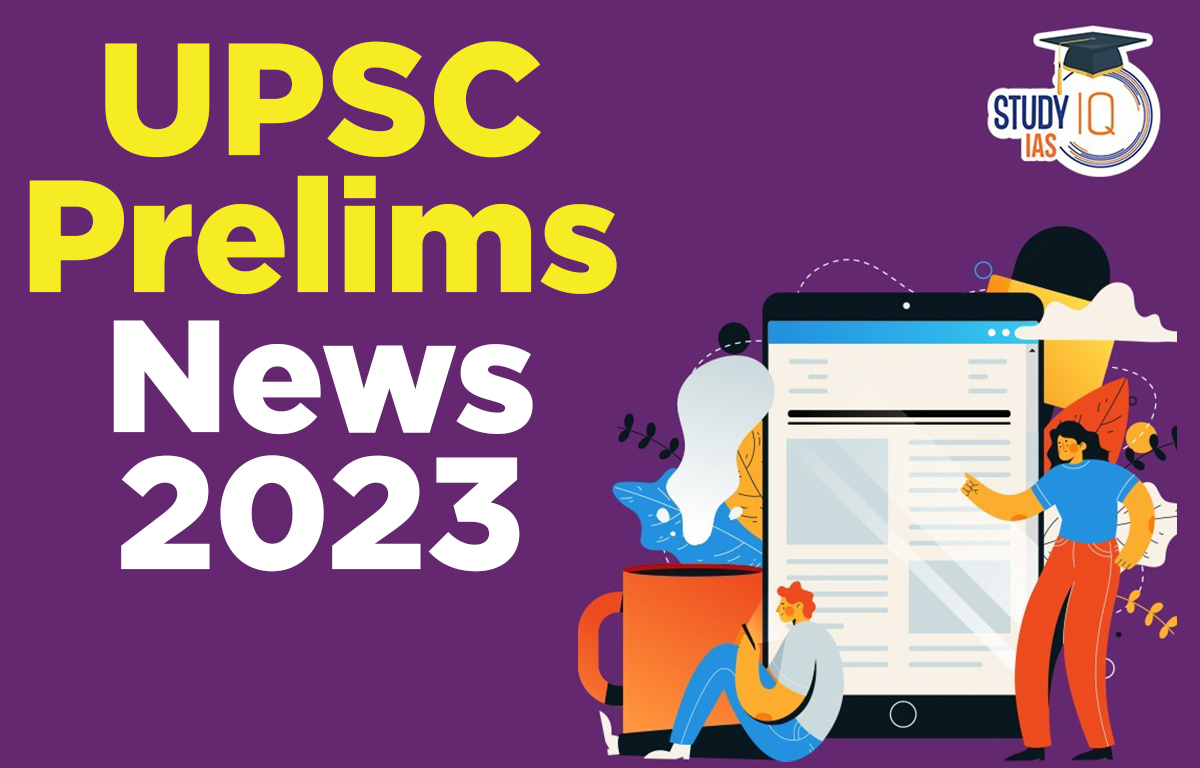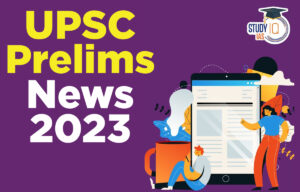UPSC Prelims News of 17 March 2023
Defence Acquisition Council (DAC)
Context: The Defence Acquisition Council (DAC) has accorded Acceptance of Necessity (AoN) for capital acquisition proposals worth Rs 70,500 crore.
About DAC
- The DAC is the highest decision-making body in the Defence Ministry for deciding on new policies and capital acquisitions for the tri-services and the Indian Coast Guard.
- Formation: It came into existence after recommendations made by the Group of Ministers on ‘Reforming the National Security System’ in 2001, post-Kargil war.
- Structure:
- Defence Minister of India (Chairman)
- Raksha Rajya Mantri
- Chief of Defence Staff (CDS)
- Tri-service Chiefs
- Defence Secretary
- Secretary Dept. of Defence Production and Supplies
- Secretary, Defence Research and Development
- Secretary, Defence Finance
- Vice Chief of Defence Staff (when appointed)/CISC
- Special Secretary (Acquisition)
- Functions
- Provide approval for AoN (Acceptance of Necessity) for Capital Acquisition Proposals.
- Responsible for Categorising the acquisition proposals into ‘Buy, Buy & Make , & Make’.
- ‘Buy’ Projects (outright purchase)
- ‘Buy and Make’ projects (purchase followed by domestic production)
- ‘Make’ Projects (indigenous production and R&D)
- Giving in-principle approval of 15 Year Long-Term Integrated Perspective Plan (LTPP) for Defence Forces.
- Monitoring the progress of major projects based on feedback from the Defence Procurement Board.
UPSC Prelims News 16 March 2023
Low Temperature Thermal Desalination (LTTD) Technology
Context: Chennai-based National Institute of Ocean Technology (NIOT) will be setting up green, self-powered desalination plant in Lakshadweep.
About LTTD Technology:
- The LTTD is a process under which the warm surface sea water is flash evaporated at low pressure and the vapour is condensed with cold deep-sea water.
- It utilizes vacuum pumps for creating a low pressure and low-temperature environment, resulting into evaporation of water at a temperature gradient of 8 °C.
- The LTTD technology does not require any chemical pre-and post-treatment of seawater and thus the pollution problems are minimal, and the process is suitable for island territories.
- Since no effluent treatment is required, it gives less operational maintenance problems compared to other desalination processes.
National Institute of Ocean Technology (NIOT)
- It was established in November 1993 as an autonomous society under the Ministry of Earth Sciences, Government of India.
- It aims to develop reliable indigenous technologies to solve various engineering problems associated with harvesting of non-living and living resources in the Indian Exclusive Economic Zone.
Black Sea and NEW START Treaty
Context: In order to end the Ukraine war, the U.S. is expected to find stability in ties with Russia to help end the Ukraine war.
About Black Sea:
- The Black Sea, also known as the Euxine Sea, is one of the major water bodies and a famous inland sea of the world.
- This marginal sea of the Atlantic Ocean, located between Eastern Europe and Western Asia.
- It is surrounded by the Pontic, Caucasus, and Crimean Mountains in the south, east and north respectively.
- The Turkish straits system – the Dardanelles, Bosporus and Marmara Sea – forms a transitional zone between the Mediterranean and the Black Sea.
- The Black Sea is also connected to the Sea of Azov by the Strait of Kerch.
- The bordering countries of Black Sea are: Russia, Ukraine, Georgia, Turkey, Bulgaria and Romania.
- There is a significant absence of oxygen in the water.
NEW START Treaty:
- The name START comes from the original “Strategic Arms Reduction Treaty”, known as START-I, which was signed between the US and the erstwhile USSR in 1991 and came into force in 1994.
- The New START, officially, the “Treaty between the United States of America and the Russian Federation on Measures for the Further Reduction and Limitation of Strategic Offensive Arms”, entered into force on February 5, 2011.
- It replaced the Treaty of Moscow (SORT), which was to expire in 2012.
- START-I, which capped the numbers of nuclear warheads and intercontinental ballistic missiles (ICBMs) that each side could deploy at 6,000 and 1,600 respectively, lapsed in 2009 and was replaced first by the Strategic Offensive Reductions Treaty (SORT or Treaty of Moscow), and then by the New START treaty.
- Its duration was for ten years that is till 2021, but it was extended by five more years till 2026.
GPT 4 and It’s Difference from Chat GPT
Context: Recently, OpenAI has said that GPT-4 is supposedly bigger, faster, and more accurate than ChatGPT.
About GPT 4:
- GPT-4 is a large multimodal model created by OpenAI.
- Large multimodal model means it can encompass more than just text and accepts images as inputs.
- GPT-4 also exhibits human-level performance on various professional and academic benchmarks.
- For example, it can answer tax-related questions, schedule a meeting among three busy people, or learn a user’s creative writing style.
- GPT-4 is also capable of handling over 25,000 words of text, opening up a greater number of use cases that now also include long-form content creation, document search and analysis, and extended conversations.
How is GPT-4 different from Chat GPT?
- Image Processing: GPT-4 can be fed images and asked to output information accordingly whereas GPT-3 and ChatGPT’s GPT-3.5 were limited to textual input and output. GPT-4 can process a lot more information at a time.
- Improved accuracy: GPT-4 significantly reduces hallucinations relative to previous models and scores 40 per cent higher than GPT-3.5 on factuality evaluations.
- Hard to trick: It will be a lot harder to trick GPT-4 into producing undesirable outputs such as hate speech and misinformation.
- Focus on more Language: GPT-4 is more multilingual which means that users will be able to use chatbots based on GPT-4 to produce outputs with greater clarity and higher accuracy in their native languages.
Right to Repair
Context: The central government has scaled up its right-to-repair initiative to cover sectors such as consumer durables, electronic devices, automobiles and farm equipment on a unified portal.
About Right to Repair
- The right to repair refers to government measures that forbid manufacturers to impose barriers that deny consumers the ability to repair consumer products.
- Problems: The manufacturers don’t reveal full servicing information or stop repairing old models, prompting consumers to buy replacements, a practice known as planned obsolescence.
- The planned framework: It aims to ease access to repair services not just by original manufacturers but also by reliable third-party technicians to lower costs and lengthen the shelf life of devices, equipment and home appliances.
- Idea: The idea behind the right-to-repair initiative is to build a consumer-centric ecosystem to increase repairability and bring transparency through collaboration.
Pennaiyar River Dispute
Context: Tamil Nadu is waiting for the constitution of an inter-State river water disputes tribunal for Pennaiyar river.
Background
- In 2018, Tamil Nadu filed an original suit against Karnataka for constructing checkdams and diversionary structures on the river.
- In December 2022, the Supreme Court gave the Centre three months to constitute the tribunal to resolve the dispute between Tamil Nadu and Karnataka over constructions across the Pennaiyar river.
About Pennaiyar River Dispute
- It involves a dispute between Tamil Nadu and Karnataka over constructions across the Pennaiyar river, also known as ‘Thenpennai’. It is known as Dakshina Pinakini in Kannada.
- Karnataka is building a dam across Markandeya River near Yargol village in Kolar district to provide drinking water to villages in Kolar, Malur and Bangarpet taluks.
- Tamil Nadu Contention: Markandeya River is a tributary of Pennaiyar, and construction of a dam by Karnataka will obstruct natural flow downstream.
- Large number of people in the state depends on Pennaiyar river for irrigation as well as drinking water purpose, and the dam and would hit them hard.
- Building a reservoir to a tributary of Pennaiyar violates the inter-state water disputes Act.
- Centre asked the two states to resolve the issue amicably, since the water quantity involved is small.
PM MITRA Scheme
Context: Ministry of Textiles will name the States identified for implementation of Prime Minister MITRA (Mega Integrated Textile Region and Apparel) scheme.
About PM MITRA Scheme
- Aim: To develop integrated large scale and modern industrial infrastructure facility for entire value-chain of the textile industry.
- The vision for 2030 is to achieve economic value of $250 billion in production and $100 billion in export of textiles, apparel, and related products.
- Objectives: It will reduce logistics costs and improve competitiveness of Indian Textiles.
- It will help India in attracting investments, boosting employment generation and position itself strongly in the global textile market.
- It will provide the best eco system for the textile industry to be collectively present in one location, with plug-and-play infrastructure, and improve the competitiveness of the textile value chain.
- It will give boost to the five F (farm, fibre, factory, fashion, foreign) vision of the Prime Minister.
- Components of PM MITRA
- PM MITRA parks are envisaged to be located at sites which have inherent strength for Textile Industry to flourish and have necessary linkages to succeed.
- Competitiveness Incentive Support (CIS) of Rs 300 Crore will also be provided to each PM MITRA Park for early establishment of textiles manufacturing units in PM MITRA Park.
- PM MITRA park will be developed by a Special Purpose Vehicle which will be owned by State Government and Government of India in a Public Private Partnership (PPP) Mode.
- Convergence: An additional amount of Rs 500 crore was allocated for the Scheme for Rebate of State and Central Taxes and Levies on Export of Garments and Made-ups (RoSCTL) from the Remission of Duties and Taxes on Exported Products (RoDTEP) scheme.
- Significance: PM MITRA Parks is envisaged to help India in achieving the United Nations Sustainable Development Goal 9 (“Build resilient infrastructure, promote sustainable industrialization and foster innovation”).


 UPSC Prelims News 20 March 2023
UPSC Prelims News 20 March 2023





















